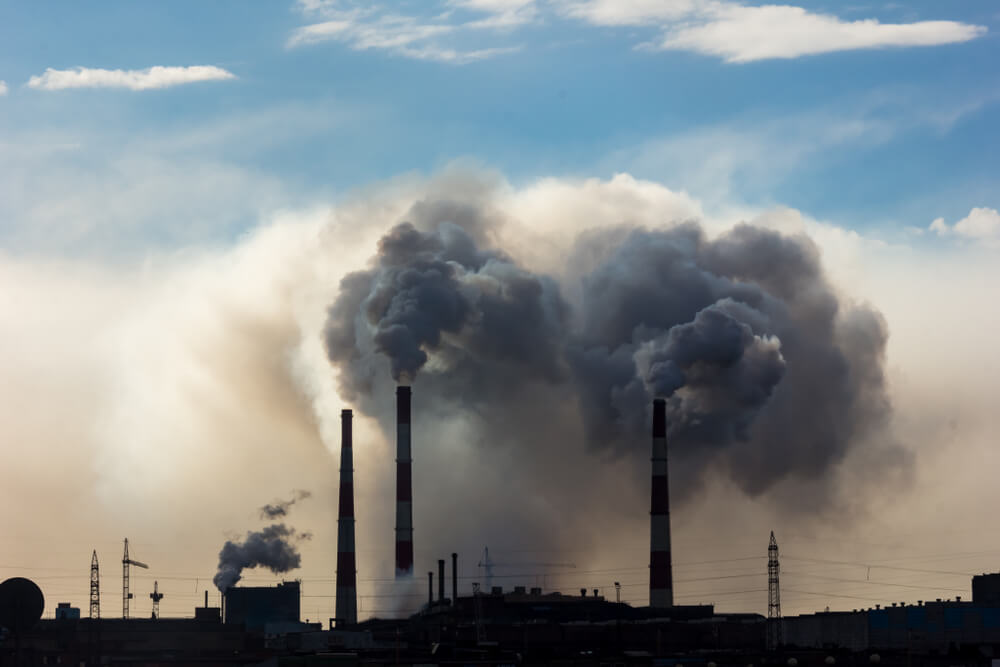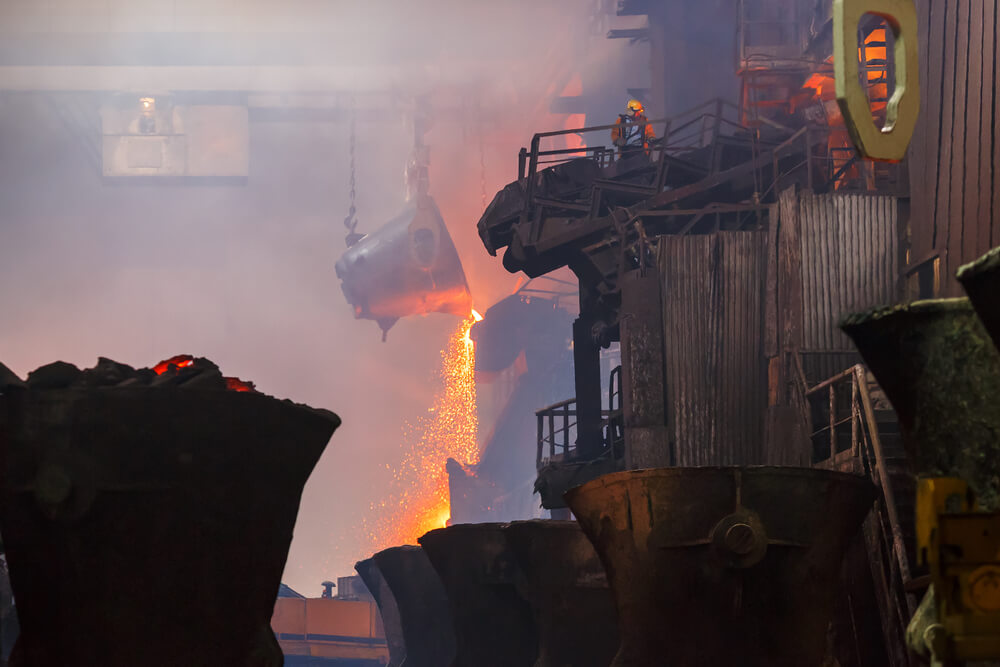'The most depressing city on Earth' is in Russia: how is life there
The gloomy city, called "the most depressing on Earth", is so remote that it cannot be reached by road, and life expectancy in polluted air is ten years lower than the average in the Russian Federation, reports New York Post.

Photo: Shutterstock
In the world's northernmost city, the remote Russian mining town of Norilsk is dark for two months of the year and has a chilling past.
With over 170 people, this small city in the Krasnoyarsk Territory of Siberia in eastern Russia is one of the most remote cities on the planet.
Norilsk is less than 3000 kilometers from Moscow and more than 1 kilometers north of the regional capital, Krasnoyarsk.
There are no roads leading to Norilsk. One freight rail line runs to and from the city, and the port city of Dudinka, 65 km away, provides a route to the city by sea, although it freezes over in winter.
It is so cut off that when leaving the city, the locals joke that they are “leaving for the mainland”.
On the subject: If you had COVID-19, you got immunity from coronavirus for life: new study
Norilsk only got a decent internet connection in 2017, after the Ipswich-sized city relied on dubious satellite connections.
Thus, the only year-round route to this remote corner of Russia is by plane, although this is not easy.
After a more than five hour flight from Moscow, visitors are greeted by an apocalyptic hellscape built on the site of a Soviet POW camp.
The modern history of Norilsk begins at the beginning of the 20th century, when a geologist discovered rich deposits of nickel, copper and cobalt at the foot of the Putorana Mountains.
Norilsk is located on the largest deposits of nickel, copper and palladium on the planet.
In 1936, the USSR began building a huge mining complex in the mountains, using about 500 forced laborers from the nearby Gulag.
For 20 years they worked in the harsh Arctic permafrost, 18 people died in appalling conditions.
Today, a fifth of the world's nickel comes from Norilsk and more than half of the world's palladium, a metal used in car exhaust systems and jewelry.
Today almost everyone in Norilsk is involved with the nickel plant, either working directly at Norilsk Nickel or working for one of the many companies that depend on it. But having such a huge enterprise of jobs in the city came at a terrible price. Norilsk today is the most polluted city in Russia and one of the ten most polluted cities in the world.
Every year, the nickel plant pumps out more than two million tons of toxic gases, including sulfur dioxide, nitrogen oxides, carbon, phenols and much more. About one percent of total global sulfur dioxide emissions come from this city alone.
This not only causes acid rain that kills many surrounding trees, but also causes devastating damage to the people of Norilsk. The average life expectancy of a worker in Norilsk is only 59 years, which is 10 years less than the Russian average.
The cancer rate in the city is also twice as high as in the rest of Russia.
The health study found that rates of blood disorders among children in Norilsk were 44 percent higher than the average child in Siberia, while rates of nervous system diseases were 38 percent higher and bone and muscle diseases were 28 percent higher.
bloody river
In September 2016, the nearby Daldykan River turned blood red.
No official explanation was given for this terrifying phenomenon; some locals attributed it to "a message from God about the coming world war." A more likely cause was runoff from a nearby smelter.

Photo: Shutterstock
Former factory worker Yevgeny Belikov was reportedly quoted by ABC News as saying that the reservoir next to the plant was of a similar color and was known to employees as the "Red Sea".
“In winter, the snow is also red,” he allegedly said. “On the one hand, it’s beautiful, but on the other, it’s chemical.”
A company representative then stated: “The Polar Division of Norilsk Nickel does not confirm the leakage of an emergency discharge of industrial waste into the Daldykan River, which could affect its condition.
“However, environmental monitoring around the river and the company’s adjacent production facilities is being carried out, including helicopter overflights,” he said.
On June 3, 2020, the river near Norilsk turned blood red again after a major diesel spill attributable to a subsidiary of Norilsk Nickel. The spill of more than 20 tons of diesel fuel into Ambarnaya after the collapse of a fuel tank at a power plant prompted Vladimir Putin to declare a state of emergency and criticize the subsidiary.
45 days of darkness
In addition to the toxic pollution, Norilsk's desert location also gives it grounds for claiming the title of the most depressing city in the world.
Situated in the Arctic permafrost, the city experiences 45 days of continuous darkness every year.
About two thirds of the year the city and its surroundings are covered with snow.
The average temperature in Norilsk in January is -44 degrees C.
The so-called “polar T3 syndrome” is common. This is caused by a lack of sunlight and can lead to forgetfulness, mood swings, and cognitive impairment.
On the contrary, in summer the sun does not set for 65 days.
Some might be confused by the fact that someone would want to work in the “world's northernmost city”, let alone live there, although there is a good reason why so many people live in this city. Norilsk Nickel employees can earn more than $986 per month, compared to the national average of less than $739.
Vladimir Putin is also unlikely to intervene anytime soon, given that the company generates an astounding two percent of Russia's total GDP.
The company is owned by Putin ally Vladimir Potanin and one of its former investors was oligarch Roman Abramovich. However, in March 2019, the ex-owner of Chelsea sold his 1,7% stake in Norilsk Nickel for $551 million.
You may be interested in: top New York news, stories of our immigrants, and helpful tips about life in the Big Apple - read it all on ForumDaily New York.
The company says it is trying to reduce pollution levels and in 2017 announced a $14 billion investment in a major new development program.
This ambitious plan was aimed at reducing sulfur dioxide emissions in and around Norilsk by 75 percent by 2023.
However, it is not clear whether this goal is achievable after the huge disruptions caused in recent years by the Covid pandemic and Russia's war in Ukraine.
Read also on ForumDaily:
Police ask not to pick up dollar bills from the ground: it can be deadly
What to do if a loved one is missing in the USA: useful contacts and resources
Subscribe to ForumDaily on Google NewsDo you want more important and interesting news about life in the USA and immigration to America? — support us donate! Also subscribe to our page Facebook. Select the “Priority in display” option and read us first. Also, don't forget to subscribe to our РєР ° РЅР ° Р »РІ Telegram and Instagram- there is a lot of interesting things there. And join thousands of readers ForumDaily New York — there you will find a lot of interesting and positive information about life in the metropolis.











